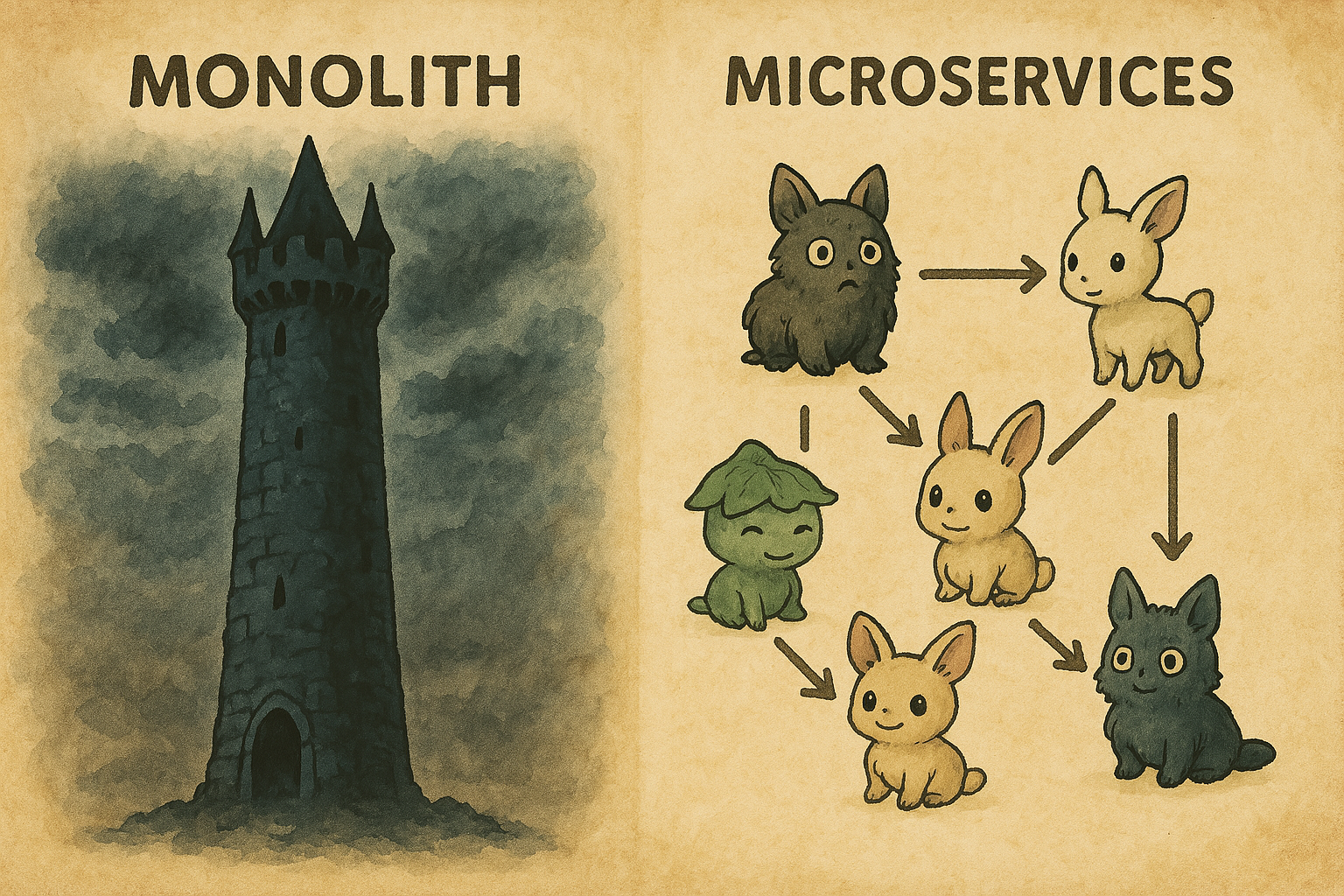Microservices and DevOps: A Perfect Match
If you're a developer exploring ways to improve your codebase and simplify your life, you've likely heard the term "microservices." It's one of those buzzwords you might nod along with but never get around to exploring in depth. Let’s take a closer look at what microservice architecture really means, why it's valuable, and how to get started without getting overwhelmed.
Microservice architecture means structuring your software as a collection of small, independent services. Each microservice handles a specific business capability or function. Instead of creating one giant application where every change can break something somewhere else, microservices let you build smaller, focused applications that communicate with each other through clearly defined APIs. Imagine going from managing a crowded warehouse full of tangled inventory to neatly organized shelves where everything is easy to find and update.
Microservice architecture allows you to build at a smaller scale, making your code friendly and approachable, like a cuddly forest creature.
Why Use Microservices?
The biggest benefit is flexibility. With microservices, teams can build, deploy, and update parts of their software independently, meaning fewer dependencies and less waiting around. Need to fix a bug or add a feature? You can update that particular service without risking your entire application. This independence leads to quicker development cycles and more stable releases. Netflix famously uses microservices to rapidly deploy updates, contributing significantly to its innovation speed and stability.
Another big win is reliability. Because services are separate, if one goes down, it doesn’t have to take everything with it. That makes your software more resilient. Amazon’s online marketplace is a prime example of this resilience, handling enormous traffic through distinct microservices, which isolate problems and keep the entire system running smoothly.
Is Adopting Microservices Difficult?
While the benefits are clear, transitioning from a traditional monolithic architecture to microservices isn’t always a walk in the park. It requires rethinking how you structure your applications, manage data, and handle communication between services. If you’re used to one centralized database, moving to distributed databases for different microservices can initially feel daunting.
It’s also essential to maintain clear documentation and communication standards. Because you’re dealing with more moving parts, organization and monitoring become critical. But don’t worry, many organizations start small, migrating one service at a time, gradually gaining experience and confidence along the way.
How to Get Started
Start by identifying one function or service within your existing application that's suitable for breaking off into a microservice. Choose something self-contained, with clear boundaries and limited dependencies. This might be user authentication, notifications, or a payment system.
Next, design a simple API to let this microservice communicate with the rest of your application. REST (Representational State Transfer) APIs are often a good starting point—they’re easy to understand, broadly supported, and work well with microservices.
Tools That Can Help
Thankfully, you don’t have to tackle microservices alone. Tools like Docker and Kubernetes help manage and scale microservices easily. Docker lets you package your applications in lightweight containers, making it easy to move between environments without compatibility headaches. Kubernetes takes container management to another level by automating deployment, scaling, and operation of application containers across clusters of hosts. Popular cloud providers like AWS, Azure, and Google Cloud also offer managed services that simplify getting started with microservices.
Microservices in the Context of DevOps
Adopting microservices fits seamlessly into modern DevOps practices, which emphasize frequent, incremental changes, fast feedback loops, and automated workflows. By breaking applications into manageable chunks, developers and operations teams can collaborate more effectively. Automated testing, continuous integration, and continuous deployment (CI/CD) pipelines—core DevOps tools and techniques—work particularly well with microservices, ensuring fast, safe, and predictable software delivery.
Microservices also support another DevOps goal: reliability. With good monitoring and alerting tools, teams can quickly identify and fix issues before they impact users. Companies like Spotify rely on microservices and DevOps techniques to constantly roll out improvements without disruption.
Ready to Explore Further?
Microservices offer a powerful approach to building modern, robust applications—but getting started can feel challenging. The good news is, you don’t have to jump in alone. Caparra provides tools and guidance specifically designed to help developers explore DevOps and microservice architecture in an approachable way.
Want to try building your first microservice, or curious about how it can simplify your code management? Sign up for a free Caparra account today. You’ll get immediate access to practical DevOps tools and resources, making it easy and enjoyable to dive into microservices and beyond.
